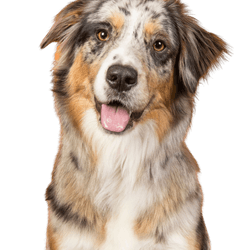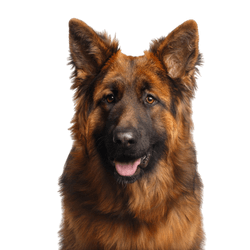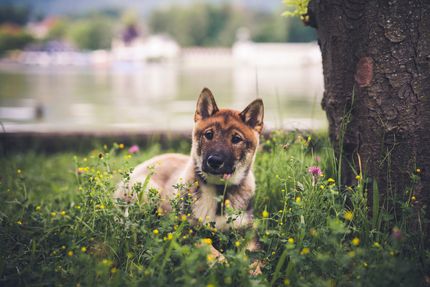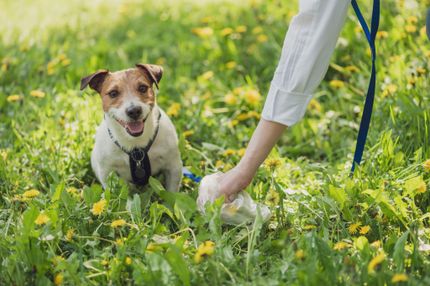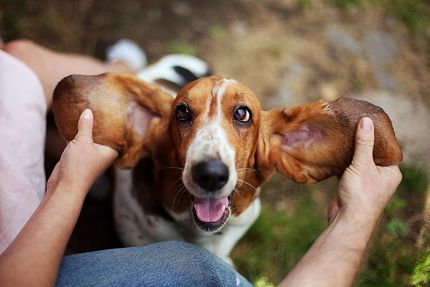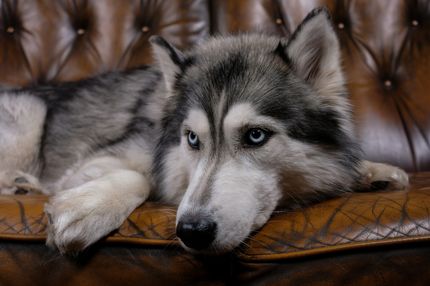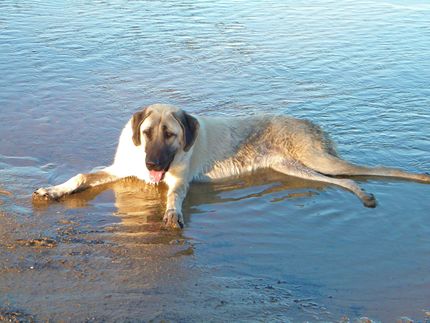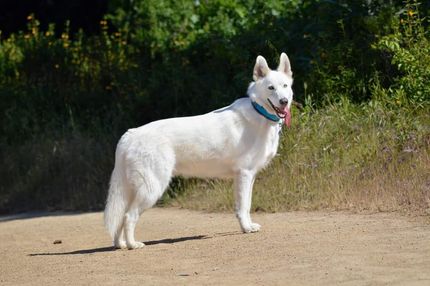Facts & Origin
The German Australian Shepherd, a mix between a German Shepherd and an Australian Shepherd, embodies the best attributes of its parent breeds, resulting in a loyal, intelligent, and industrious canine companion.
Origin and History
The exact lineage of this mixed breed isn't explicitly documented. However, both parent breeds, the German Shepherd and the Australian Shepherd, have extensive histories as working dogs. Originally bred in Germany for shepherding purposes, the German Shepherd is known for its versatility and service in many areas. The Australian Shepherd, despite its name, was developed in the United States for cattle herding.
Suitability and Requirements
The German Australian Shepherd is a high-energy, intelligent dog, demanding a significant amount of physical and mental stimulation. They're best suited for active families who enjoy spending ample time outdoors. This mixed breed also benefits from participating in dog-related activities such as agility, flyball, or protection dog training.
With its working dog roots, this mix exhibits a natural vigilance and protective instinct, making it an excellent watchdog. At the same time, it's also deeply affectionate, loving to spend time with its family.
Despite its many merits, the German Australian Shepherd isn't for everyone. Its high energy and need for mental stimulation can be demanding for some owners. Consequently, it's important that prospective owners are ready to invest enough time and energy into training and caring for these dogs.
In summary, the German Australian Shepherd is a captivating mix that brings both joy and challenges. With proper guidance and care, it can make a wonderful companion.


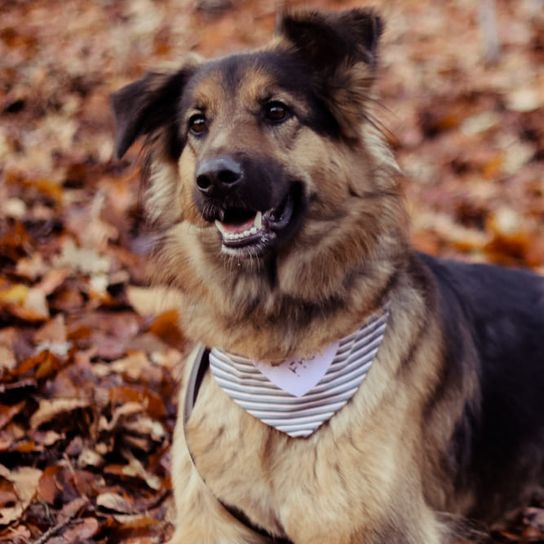
| Alternate Name | Aussie Shepherd |
| Origin | USA - Germany |
| Life expectancy | 9 - 15 years |
| Care requirements | high-maintenance - low-maintenance |
| Activity level | high |
| FCI group | not recognised |
| AKC group | not recognised |
| KC group | not recognised |
More Australian Shepherd mixes
More German Shepherd mixes
Attitude, character and temperament of the breed
The Australian German Shepherd is characterized by a wealth of traits inherited from its parent breeds, the German Shepherd and the Australian Shepherd.
Intelligence and Learnability
The Australian German Shepherd is an incredibly intelligent and eager-to-learn breed. Descending from two breeds known for their high intelligence and quick learning capabilities, these dogs, with the right training and encouragement, are capable of performing and mastering a variety of tasks.
Work Drive and Energy
As descendants of two working dog breeds, Australian German Shepherds possess a high degree of energy and work drive. They require regular physical and mental stimulation to stay happy and healthy. Thus, they are best suited for active families or individuals who can provide ample exercise and engagement.
Loyalty and Bonding
Australian German Shepherds tend to be incredibly loyal and attached, building strong bonds with their families and often ready to protect them. This makes them excellent watchdogs as well as loving family members.
Social Skills
Depending on their socialization and upbringing, Australian German Shepherds can get along well with other animals and children. However, they can also be territorial or possessive, making early and consistent socialization critical.
Confidence and Dominance
Some Australian German Shepherds may be confident or even dominant, especially if they inherit these traits from their German Shepherd parent. Consistent training and positive reinforcement can help manage these characteristics.
In conclusion, this mix is a versatile and fascinating breed whose personality traits can vary from one dog to another. With the right upbringing, training, and care, these dogs can become excellent and loyal companions.
Character
The Australian German Shepherd, like any breed of dog, may be susceptible to certain genetic health issues inherited from its parent breeds, the German Shepherd and the Australian Shepherd. It's crucial to note that not every Australian German Shepherd will develop these conditions, but potential owners should be aware of these potential health concerns.
Hip and Elbow Dysplasia
Both German Shepherds and Australian Shepherds can be prone to hip and elbow dysplasia, a condition where the joints do not form properly. This can result in discomfort, mobility problems, and over time, arthritis.
Eye Problems
Australian Shepherds can be susceptible to various eye conditions, including Collie Eye Anomaly and Progressive Retinal Atrophy. Both conditions can lead to gradual vision loss and, eventually, blindness.
Epilepsy
Both parent breeds may be predisposed to epilepsy, a neurological disorder that triggers recurrent seizures. Although this condition is incurable, it can often be managed effectively with medication.
Degenerative Myelopathy
German Shepherds are prone to Degenerative Myelopathy, a neurological disorder causing weakness and paralysis in the hind legs, which progressively worsens over time.
To minimize the risk of these conditions, it's important to select a responsible breeder who conducts thorough health tests on their breeding dogs. Regular veterinary examinations and a healthy lifestyle can also contribute to the overall well-being of the Australian German Shepherd.

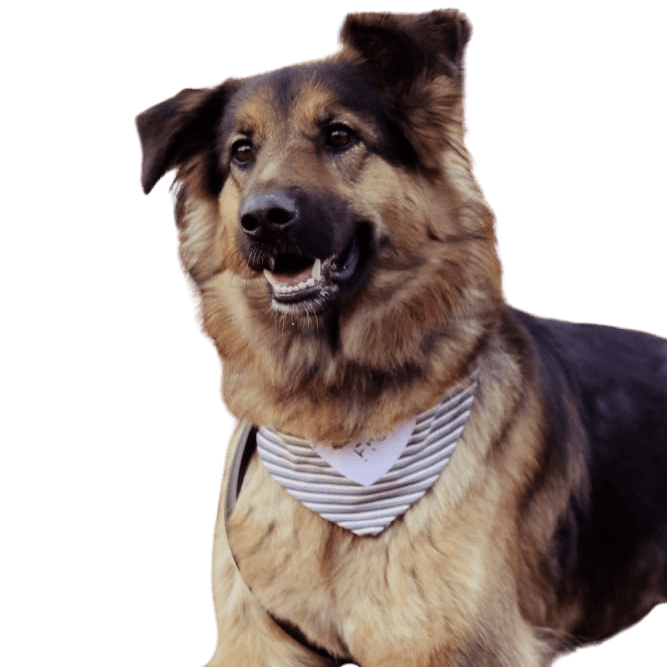
The Australian German Shepherd boasts a distinctive and appealing appearance that blends the unique characteristics of its parent breeds, the German Shepherd and the Australian Shepherd. Depending on the inherited traits of the parent breeds, this hybrid breed's size usually ranges from medium to large. They typically reach a height of 19.6 to 25.5 inches (50 to 65 cm) and a weight of 44 to 88 lbs (20 to 40 kg).
Coat and Color
The coat of the Australian German Shepherd is usually medium in length and dense, although the texture can vary from the smooth coat of an Australian Shepherd to the thicker, double coat of a German Shepherd. This breed requires regular grooming to maintain the health and appearance of the coat.
Coat colors can vary considerably. Some Australian German Shepherds inherit the classic blue or red merle patterns of Australian Shepherds, while others display the traditional saddle pattern of German Shepherds. Many Australian German Shepherds present a mix of colors from their parent breeds, resulting in a variety of unique and beautiful coat patterns.
Distinct Physical Traits
Another notable feature of the Australian German Shepherd is their expressive face and lively eyes, which echo the intelligence and alertness of this breed. Their ears may either inherit the upright trait from the German Shepherd or the semi-upright attribute of the Australian Shepherd.
In conclusion, the Australian German Shepherd impresses with its unique and fascinating appearance. With its versatile coat color and texture, combined with its imposing physical stature, this breed is both attractive and functional - a true embodiment of the best qualities of its parent breeds.
| Fur length | long |
| Fur | flat coated |
| Ear shape | Standing Ears |
| Tail | fanned out |
| Anatomy | sporty, massive, strong |
| Size ♀ | 46 - 60 cm |
| Weight ♀ | 22 - 32 kg |
| Size ♂ | 51 - 65 cm |
| Weight ♂ | 28 - 40 kg |
| Suitable For | - |
Known Diseases
Hip dysplasia (HD)
Hip dysplasia (HD) is a genetic condition in dogs where the hip joint is not shaped properly. This leads to pain, stiffness and restricted movement.
Elbow dysplasia (ED)
Elbow joint dysplasia is a chronic disease complex of the elbow joint of fast growing dog breeds.
MDR1 defect
The MDR1 defect is a defect in the MDR1 gene that can occur in some breeds of dogs and in humans. This results in the deficient or absent synthesis of a certain protein which is an important component of the blood-brain barrier, leading to hypersensitivity to some drugs.
Progressive Retinal Atrophy (PRA)
Progressive retinal atrophy (PRA) is a slowly progressive death of the retina in dogs.
Numbness
Often occurs in old age.
FAQ
-
A German Shepherd-Aussie mix can look different depending on which parent breed it inherited more characteristics from. However, most mixed breeds have a dense, medium-length coat that is either black and tan or predominantly black with some white markings. They also have a strong, muscular build, pointed ears and a long tail.
-
German Shepherd-Australian Shepherd mixes are intelligent, active and loyal dogs. They make excellent family dogs, but can be too energetic for very young children. They need a lot of exercise and mental stimulation, so they are not the best breed for someone who is not willing to give them both.
-
They typically reach a height of 19.6 to 25.5 inches (50 to 65 cm) and a weight of 44 to 88 lbs (20 to 40 kg).
-
The life expectancy of a German Shepherd-Aussie mix is usually 10-14 years.
-
German Shepherd-Australian Shepherd mixes can be good family dogs if they are properly socialized and get enough exercise. They are intelligent, active dogs that need a lot of mental stimulation, so they are not the best breed for someone who is not willing to give them both.

